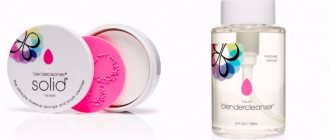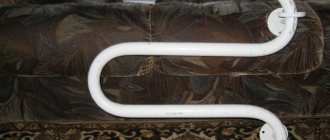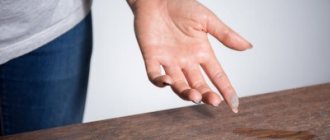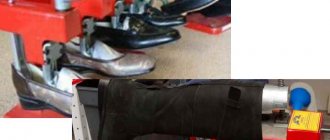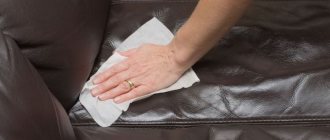Features of epoxy resin
Epoxy is a substance with a complex structure; its chemical formula is represented by short polymer chains, which gives the composition special strength. Together with a hardener, the resin can be used as a casting compound - self-leveling floors, jewelry, and figurines are made from it. Epoxy resin is also included in the glue of the same name. Curing of any epoxy-based material occurs only after its contact with a hardener - a special solution that starts the polymerization process.
If the resin stain has managed to harden, it will not be easy to remove. This is due to the properties of the material - moisture resistance, resistance to mechanical damage, scratching, heat resistance. It is much easier to dissolve or remove stains from resin-based adhesive before final polymerization occurs. Then it will be easier to clean them, although marks on the surface may remain forever.
In order not to have to deal with removing defects, it is better to provide all the necessary safety measures in advance. Surfaces near the work area should be covered with cellophane or newspapers. Gloves are put on your hands - the chemical compound upon contact with skin often causes allergies or burns.
Where are resin contaminations most often located?
The most common way to use epoxy resin is as an adhesive. Epoxy glue is an old proven tool for repairing rubber products, shoes, gluing wooden and ceramic surfaces.
In domestic conditions, glue most often gets on unprotected areas of the skin of the hands, as well as on items of clothing. Therefore, it is strongly recommended to work with glue wearing protective gloves and an apron.
If the substance does get on the skin, it is necessary to take immediate action, since synthetic resin is an aggressive chemical and can cause burns to the epidermis, dermatitis, and allergic reactions.
Basic methods for cleaning stains
The choice of method for removing epoxy at home depends on the size of the stain, how long ago it appeared, and the delicacy of the base material. Sometimes it is better to remove the defect mechanically; in other situations it is worth using an epoxy resin solvent. The basic principle of washing off a substance is to start the reverse process, when the hardened mass begins to liquefy again. This can harm the surface, so if it is valuable, less aggressive techniques are used.
Heating the base
During the polymerization reaction of epoxy resin, excess heat is always generated. This is due to the peculiarities of the chemical reaction: the combination of epoxy groups and the hardener provokes heating of the mixture. This is the basis for the method of dissolving glue after returning it to its original state of aggregation. The method is suitable for washing off resin deposits from furniture and tiles.
A hair dryer will be useful for heat treatment of the area. The technique for removing frozen mass is as follows:
- wipe the surface of the area with acetone, white spirit or other degreaser;
- turn on the hairdryer, heat the stain to a temperature of more than 180-190 degrees (usually this is the heat resistance limit of the epoxy);
- as the stain heats up and liquefies, you need to clean it; to make the task easier, you can drop a little acetone inside the stain;
- It is better to wipe off the defect with a soft cloth or sponge; if necessary, you can use a sharp knife;
- the remaining material is heated again and the procedure is repeated until the item is completely clean;
- usually the entire stain removal process takes no more than 3-5 minutes;
- If desired, you can use a soldering iron instead of a hair dryer to heat the resin through the paper.
It is extremely undesirable to allow the mass to boil during heating. This can cause it to rapidly clot, after which the solubility will seriously decrease. Cleansing should be done in small sections, heating them sequentially. When cleaning wood, acetone must be used as a solvent; it will prevent the material from cracking from heating.
Freezing Pollution
To implement this cleaning method, you do not have to place the products in the freezer, especially since this is not always possible. You should buy a special refrigerant in the store; it is sold in the construction and repair departments. Working with this substance is permitted only with the use of personal protective equipment. Therefore, at the same time, you need to purchase glasses, a respirator, and gloves. Without them, there is a risk of damage to the body from solid fragments.
The procedure for removing stains is as follows:
- open windows or turn on fresh ventilation;
- remove children and pets from the premises;
- shake the refrigerant bottle thoroughly;
- spray the product over the area of the resin that has managed to harden from a distance of 30 cm (keep the container only with the neck up);
- after the stain has become brittle and begins to crumble, it must be quickly rubbed off, scraped off with a knife or metal spatula. You can also break it with a hammer and collect it with a broom or vacuum cleaner;
- if necessary, the refrigerant is sprayed again;
- epoxy resin fragments should be thrown away immediately, sealed in a sealed plastic bag.
Mechanical removal
This method is best suited if the resin cannot be chemically washed off, and the thermal effect can harm the delicate surface. In such a situation, you should take a sharp knife (for example, a stationery knife), a razor, or a thin iron spatula. Use this object to carefully remove epoxy stains until the base material is exposed. It is worth cutting off the stain layer by layer so as not to accidentally damage the base. If there is a large area of contamination, you will have to be patient - the process will be labor-intensive.
Chemical solvents
Epoxy resin is a soluble material, but not all solutions can wash it off. A distinctive property of epoxy is its chemical resistance, so you will have to choose a truly aggressive substance to soften the stains. Even when purchasing, you need to read on the composition whether it is suitable for the existing type of surface. Many solvents damage leather, leave stains on stone, and literally burn through plastic. You need to be especially careful with expensive furniture and fabric coverings.
How to remove a stain without damaging the base? You can try acetone, varnish or enamels solvent. First, drop a little product into the center of the influx and monitor its reaction. If it begins to soften, then the epoxy can be completely washed off. Wipe areas of the resin with such means, while simultaneously cleaning the surface mechanically.
You should only work in a respirator with doors and windows open. It is better to work in the fresh air, because the vapors of such liquids are very toxic. You cannot immediately pour a lot of solvent onto plastic or wood; the material will certainly be damaged.
What else can thin epoxy resin? Epoxy dissolves perfectly in methylene chloride, but it is so caustic and dangerous (carcinogenic) that it is not worth risking your health. At home, craftsmen often try to wash off the resin with the following substances:
- nail polish remover;
- denatured alcohol;
- sulfuric acid;
- wash SP-6;
- DMF, DMSO.
Removing resin by freezing
Special refrigerants are sold in the construction departments of specialized stores.
The use of these products is allowed only with the use of protection for exposed parts of the body - glasses, gloves, a respirator. This is done in order to avoid injury from hard fragments.
The method is recommended for use on delicate materials, the processing of which with high temperatures or chemicals entails a risk of damage.
The work area must be well ventilated. The presence of pets and children during work is prohibited.
Removal procedure:
- Shake the refrigerant bottle thoroughly
- holding the can strictly vertically at a distance of 30 cm from the surface, apply the product to the hardened resin stain
- the epoxy composition will become brittle and crumbs of the substance will begin to form. At this point, you should quickly remove the material with a knife, metal spatula or hammer (crush the resin by hitting it)
- the resulting fragments are placed in a sealed cellophane bag and thrown away.
If necessary, repeat the steps until complete removal from the surface.
You can remove resin stains mechanically - carefully cut the material layer by layer with sharp tools (knife, spatula, scraper, razor) until the base surface is reached.
Cleaning time directly depends on the area of the surface being treated.
Removing product from skin
It happens that epoxy glue gets on the skin of the hands or other areas, this especially often happens when working without gloves. If you do not react in time, there is a risk of getting a chemical burn or contact dermatitis. You need to do the following:
- immediately wash the skin with soap;
- rinse the stained area with a disinfectant, if available;
- Thoroughly wipe the contact area with a soft towel or paper napkin.
You can also remove the stain from your hand with acetone, but people with sensitive skin should not do this. You can wipe with acetone or nail polish remover only the area where the resin gets in, but not the entire hand, otherwise cracks may appear on the skin. Afterwards, wash your hands with soap and rub in any nourishing cream.
If the contamination has managed to harden and remains unnoticed, it is soaked in any vegetable oil until it is completely peeled off.
How to clean resin from hair
It's not just your hands, feet or face that can get stained with resin. It is much more difficult for housewives when droplets of resin have frozen in their gorgeous long hair. We will not rush and take up the scissors. Let's try to rectify the situation.
Peanut butter and mayonnaise
And again we turn to folk methods. Peanut butter or mayonnaise will help us. They soften the resin and strengthen the hair structure. For children, soap can be replaced with a special shampoo, which, if it gets into the eyes, will not sting too much. The method is great for both long and short hair.
- Apply mayonnaise or oil along the entire length of the stained strand.
- Wrap your head in plastic wrap.
- Let stand for 30 minutes.
- Wash off with warm running water and baby soap.
Wash your hair after the procedure with warm water and soap.
Washing from clothes
After the composition gets on the fabric, the stains are absorbed very quickly and harden no less quickly. Aggressive techniques can destroy the fibers, so cleaning will lead to irreparable damage to the item. But you can try to clean small resin stains in this way:
- Ammonia solution 10% or ethyl alcohol. You should moisten the stain, and after a couple of minutes, clean it with the corner of a spatula.
- Freezing. Place the bag with the item in the freezer for a couple of hours, then scrape off the epoxy.
- Heating. Place white paper on the epoxy stain and iron it until the compound melts. Remove it with any suitable device.
There are also more exotic methods for removing stains. Thus, the resin can be dissolved by the action of Pepsi or Coca-Cola soda, after which it can be removed from the fabric. You can also lubricate the drips with the pharmaceutical preparation “Dimexide”. Mix it with water 1:3, wet the item, and remove the stain. After using any method, you need to wash the product in a machine with regular washing powder.
Dried resin on hands - how to wash it off?
Renovation work is very exciting, especially for hardworking men. And often resin stains on the skin of the hands are found already in a hardened form, which can be tried to be washed off in several ways.
- Ice cubes.
If you are at home, you can use a cube or piece of ice from the freezer. Rub the dirt vigorously with ice and wait. Under the influence of cold, the glue will dry quickly, and it can be carefully removed from your hands, for example, with the blunt side of a knife. - Oily liquids
. Spread the resin stain with a thick layer of oil: sunflower, olive, cosmetic. As an option, high-fat mayonnaise is sometimes used. Periodically rub the oily substance into the epoxy stain. Then you can try to remove the softened resin from the skin with gentle movements. - Solvent.
Both for hardened stains and for fresh smears of glue, a solvent or various alcohols are used: denatured alcohol, wine alcohol, ammonia, etc.
Temperature methods of influence
Kitchen countertop made of epoxy resin: how to choose a resin, prepare a wooden surface, pour it correctly
Epoxy resin is designed to be used in a limited temperature range. Excessive heating can cause the resin to become viscous, while freezing, on the contrary, makes the epoxy brittle. These physical properties make it possible to use temperature effects for removal - heating and freezing.
Heat
Using heat is one of the gentle methods. You can even use an ordinary hair dryer, but a construction hair dryer is better.
In order to get a good result, you need to set the device to a high temperature.
The heating process should take place evenly - to do this, the hair dryer is moved from side to side over the affected area. After the top layer of the stain has warmed up, it is carefully removed with a spatula.
For epoxy that has hardened in a thick layer, heating and using a spatula must be repeated several times. This will allow you to remove the entire composition carefully, without damaging the base. Gradual stripping is a necessary condition, since the entire voluminous layer is not able to warm up at once.
The heating method can only be used on heat-resistant surfaces.
Freezing
To remove epoxy from a surface, it can be frozen. For small items, such as clothing, it is permissible to place the item in the refrigerator.
After exposure to low temperatures, the resin crumbles easily - it can be broken into pieces and shaken off; from dense materials - cleaned off with a spatula.
In cases where it is impossible to place an item in the refrigerator, a special aerosol is used that cools the desired area when sprayed. As a result, the hardened resin becomes cracked and can be removed.
The use of aerosol freezing agents must be carried out strictly in accordance with the instructions for the specific drug.
What is epoxy glue?
Every master builder, carpenter, electrician, aircraft and rocketry worker has already become acquainted with him. Epoxy adhesives are oligomers that include epoxies, which harden under the action of hardeners and form cross-linked polymers. The result is a composition that demonstrates good adhesion to a wide variety of surfaces. It is used both in industry and in everyday life; it is used to make jewelry and leather crafts. Even epoxy resin itself can be used as an adhesive, but hardeners improve its adhesion to the surface.
Epoxy adhesive composition
The main active ingredient is epoxy resin; glue consisting only of this component is able to fulfill its purpose. However, in accordance with GOST, a hardener is added to it. Carboxylic acids, polyamines, aminoamides and others act in this capacity. There are many other additional components, including:
- fiberglass;
- rubbers;
- aluminium oxide;
- organic resins;
- additives from zinc, nickel, vanadium;
- formaldehyde;
- clay and more.
What does epoxy glue look like?
Depending on the brand and brand, epoxy glue appears as a clear, yellow-orange liquid. It is very similar to honey. With a larger number of hardeners in the composition and certain color pigments, epoxy resin glue can resemble tar, a residue from oil refining. The color of the binder composition can be very different and vary from transparent to wine red. A lot depends on the percentage of fillers and main components.
Heating
Epoxy stains can be successfully removed from tiles or kitchen furniture using heat. Initially, before contact with the hardener, the substance has the consistency of a gel. High temperature will return the resin to its previous gel-like aggregate state.
Advice! Before heating the wood surface, dampen the stained area with acetone. This will prevent the wood from cracking.
How to apply the method:
- Wear safety glasses and gloves. This is necessary because when heated, the epoxy resin releases vapors that are dangerous to the eyes and skin. Glasses should fit snugly to the face, have no holes, and provide good protection from the penetration of vapors into the eyes. Gloves should fit snugly to limit air ingress and cover the wrists by at least 8 cm.
- Wear long sleeves made of thick fabric. This will prevent harmful vapors from penetrating the skin.
- Lubricate the contaminated wooden surface with acetone. It will take at least 60 minutes for the resin to soften and absorb the product into it. After this, start heating.
- Turn on the hair dryer at maximum power and blow on the contaminated area for 3-5 minutes. The epoxy must heat up to 90° C, in which case it will soften.
Advice! Acetone is absorbed into wood, but does not penetrate into plastic, vinyl, marble, cement or metal, acting only on the surface.
Do not direct the hot stream of air motionlessly to one place; move the hairdryer from side to side while heating.
Features of cleaning before and after painting
A paint coating applied to a wooden surface does not stop the appearance of a new portion of resin on the wood. Therefore, it is advisable to carry out degumming before painting.
In this case, the chances of preserving the decorative coating are higher. Untreated wood can be cleaned using any means, including solvents. Mechanical resin removal is also suitable. After processing, the boards must be sanded with sandpaper of a suitable grain size.
If the wooden structure is already painted, the process of removing the resin becomes more difficult. This is due to the fact that many chemicals can ruin the decorative coating. In such a situation, it is recommended to use safe means.
For example, the following composition is suitable:
- liquid soap – 25 g;
- ammonia – 50 ml;
- water – 1 l.
Use hot water to dissolve the components. Cleaning is carried out until the liquid has cooled. The released resin is removed with a rag soaked in a prepared soap solution.
Non-standard methods for cleaning clothes
As practice shows, non-trivial ways to save wardrobe items dear to your heart also work.
For example, the well-known brands of carbonated drinks “Coca-Cola” and “Pepsi-Cola” have proven themselves well as a powerful household cleaner.
Of course, there is no need to add lemonade to the washing machine, but it is quite possible to mechanically remove stains from colored fabrics. After the obvious cleaning effect, it is better to wash the item thoroughly.
Dimexide is a cheap pharmaceutical product for treating postoperative sutures and compresses. Dimexide should be diluted in warm water in approximately a ratio of 1:3, wet the fabric generously with the solution, leave for a while, and then wash in the usual way.
Silicate glue to replace epoxy
How to dilute epoxy resin
How can you reliably glue parts if there is no epoxy glue available? In household repairs of shoes, appliances, electronics, and furniture, epoxy is most often used. But as a replacement, you can purchase silicate glue - it is great for fabric, wood, plastic, glass, ceramics, and metal. Like epoxy, materials are impregnated with this glue to ensure fire resistance.
To enhance the strength of the product and bring its performance closer to epoxy, you can independently prepare different types of glue:
- Mix 100 ml of silicate glue, 32 g of powdered glass, 50 g of asbestos. This composition has high thermal and chemical resistance.
- Take a small amount of glue, add quartz sand and asbestos to it until it reaches a thick consistency. This material will be resistant to alkalis and acids.
- 16 g of glue is combined with 40 g of milk casein, the composition has increased moisture resistance.
If you plan to use epoxy to seal a bathroom or kitchen sink, you can buy regular silicone sealant. It is inexpensive, and its properties are no worse than epoxy resin.



